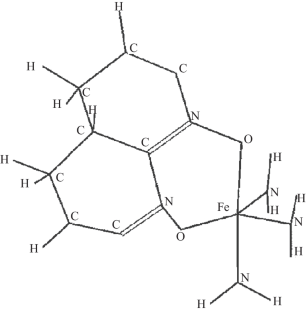聚丙烯腈基质中催化剂活性片段建模
IF 0.3
4区 工程技术
Q4 CHEMISTRY, MULTIDISCIPLINARY
引用次数: 0
摘要
讨论了确定催化剂表面的数学方法。确定了 Fe[O2(NH2)3] 片段中的键角。确定了所得复合物的几何形状。探讨了使用量子化学模型研究活性位结构的有效性。本文章由计算机程序翻译,如有差异,请以英文原文为准。

Modeling the Active Fragment of a Catalyst in a Polyacrylonitrile Matrix
A mathematical method for determining a catalyst surface is discussed. The bond angles in an Fe[O2(NH2)3] fragment are determined. The geometry of the resulting complex is established. The effectiveness of using quantum-chemical modeling to study the active-site structure is examined.
求助全文
通过发布文献求助,成功后即可免费获取论文全文。
去求助
来源期刊

Fibre Chemistry
工程技术-材料科学:纺织
CiteScore
0.70
自引率
60.00%
发文量
70
审稿时长
6-12 weeks
期刊介绍:
Fibre Chemistry publishes original research and review articles in the field of man-made fibre production and application. The journal offers scientific and technical articles on the following aspects: chemistry, technology, machinery and economics of man-made production; the initial monomers and polymers; the properties of man-made fibres and their processing in various industry branches (textiles, rubber, composites, etc).
 求助内容:
求助内容: 应助结果提醒方式:
应助结果提醒方式:


